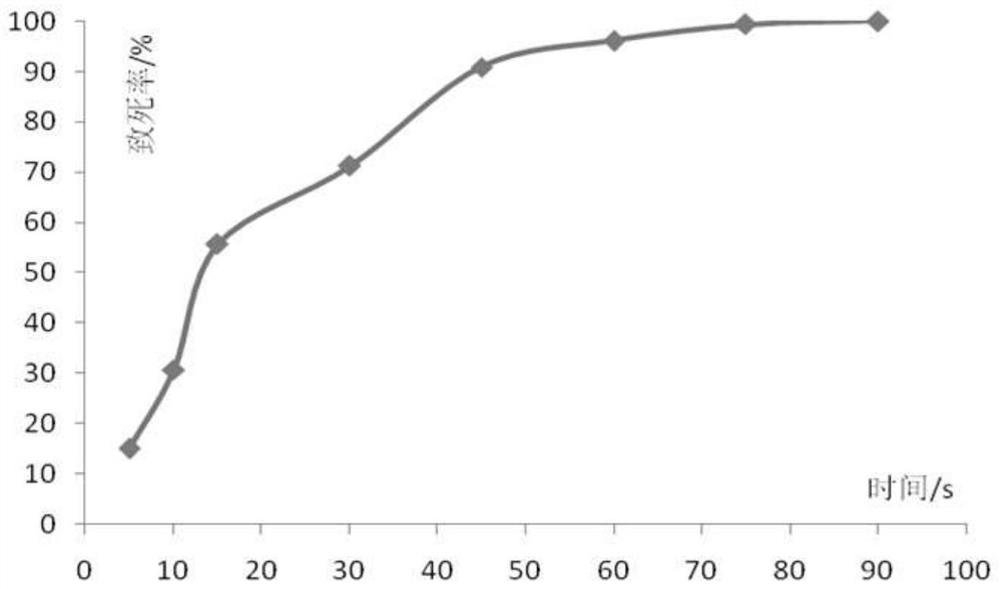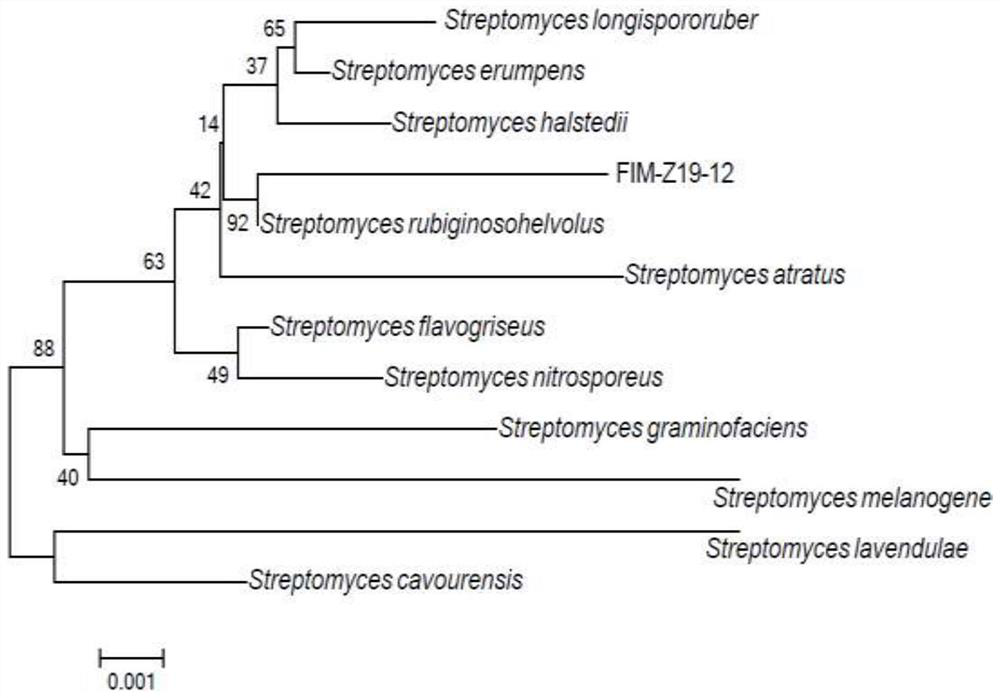Streptomyces rubiginosohelvolus capable of producing actinomycin D through fermentation and applications thereof
A technology of Streptomyces celuteus and Streptomyces cereus, applied in the field of fermentative production of actinomycin D, can solve the problems of unsatisfactory performance of fermentation strains and achieve stable potency, Improved yield and good stability
- Summary
- Abstract
- Description
- Claims
- Application Information
AI Technical Summary
Problems solved by technology
Method used
Image
Examples
Embodiment 1
[0030] Embodiment 1 sets out the isolation of bacterial strain FIM-Z19
[0031] Soil was collected in a vegetable garden at the foot of Mount Tai in Jinan City, Shandong Province. Specifically, the floating soil about 10cm above the surface was removed with a sampling shovel, and 10g-25g of soil samples at 10cm were collected; 2g of soil samples were weighed and 10mL of sterile saline was added. Set aside for 30 minutes, take the supernatant, that is, the original solution, and carry out gradient dilution with sterile saline, and the selected dilution is 10 -2 、10 -3 、10 -4 and 10 -5 suspension.
[0032] Take 0.1mL of the original solution and the selected suspension and spread them on the separation agar medium plate prepared by adding 50mg / L potassium dichromate water, repeat 3 parallel plates for each sample, and then place the coated plate on Cultivate at 28°C, and observe the morphological characteristics such as colony appearance, size, color, edge shape, and surface...
Embodiment 2
[0034] The acquisition of embodiment 2 mutagenesis strain FIM-Z19-12
[0035]Take the above-screened strain FIM-Z19 and transfer it to the slant medium, and culture it in a constant temperature incubator for 8-12 days at a temperature of 28°C; then wash the spores on the slant medium with physiological saline, glass The beads were broken up and filtered through gauze to make 10 6 individual / mL spore suspension.
[0036] Use a pipette gun to draw 10 μL of the spore suspension prepared above onto a circular iron sheet with a diameter of 1 cm, and place it in a room-temperature plasma induction chamber with helium as the working gas, a power supply of 110 W, and a working gas flow rate of 10 L / min. In the variable system, and the treatment distance is 2mm, respectively treat 5s, 10s, 15s, 30s, 45s, 60s, 75s, 90s, carry out gradient dilution and smear the spore suspension after treatment on a plate, and make a lethality curve (such as figure 1 shown). It can be seen from the fi...
Embodiment 3
[0046] Identification of embodiment 3 mutagenic strain FIM-Z19-12
[0047] Identification of Physiological and Biochemical Characteristics
[0048] The obtained strain FIM-Z19-12 was streaked on the separation medium plate and inserted into a cover glass, cultured at 30°C for 7-20 days, and the morphological characteristics of the single colony and its bacteria were observed with an optical microscope, transmission and scanning electron microscope. Silk.
[0049] The main morphological and physiological and biochemical characteristics of the strain FIM-Z19 are as follows: plate colonies are round, with central protrusions, wrinkled surfaces, aerial hyphae are white or yellowish, base hyphae are light yellow, and produce soluble yellow or reddish-brown Glucose, fructose, rhamnose, arabinose, mannitol can be used, sucrose, raffinose, inositol can not be used . This strain is a highly aerobic bacterium, the optimum growth temperature is 28-32°C, the optimum growth pH is 7.0-8....
PUM
 Login to View More
Login to View More Abstract
Description
Claims
Application Information
 Login to View More
Login to View More - R&D
- Intellectual Property
- Life Sciences
- Materials
- Tech Scout
- Unparalleled Data Quality
- Higher Quality Content
- 60% Fewer Hallucinations
Browse by: Latest US Patents, China's latest patents, Technical Efficacy Thesaurus, Application Domain, Technology Topic, Popular Technical Reports.
© 2025 PatSnap. All rights reserved.Legal|Privacy policy|Modern Slavery Act Transparency Statement|Sitemap|About US| Contact US: help@patsnap.com


